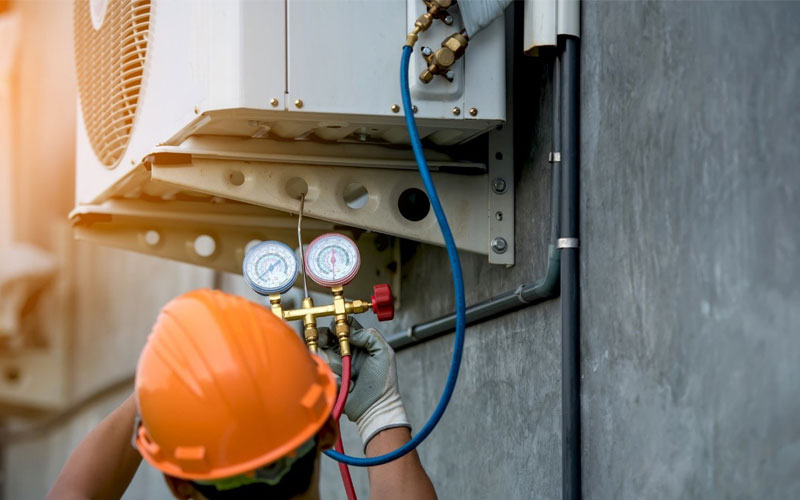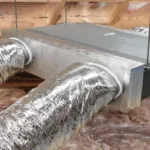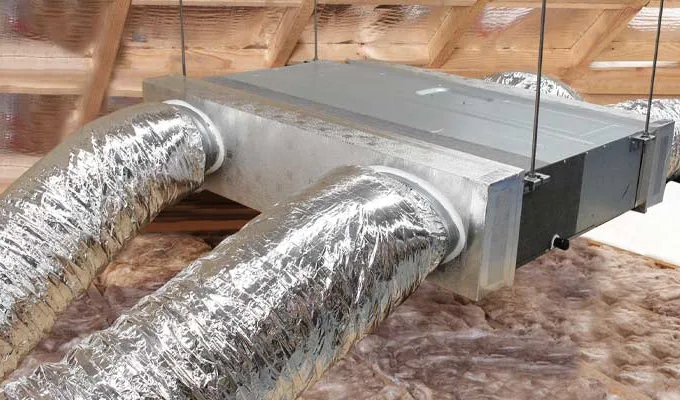An HVAC manifold gauge is a crucial tool for HVAC technicians and engineers in the field of refrigeration maintenance. This equipment monitors and measures the pressure and temperature of refrigerant gases in an HVAC system.
Typical refrigerant gauge sets include multiple gauges that are connected to various points in the system. It allows for accurate readings and adjustments to be made.
There are two types of gauges – the analog and digital options. In this document, we will explore these HVAC manifold gauges. You can better understand their roles in HVAC maintenance and refrigeration systems.
So, let’s dive in!
Analog HVAC Manifold Pressure Gauges
Analog gauges are traditional and still commonly used in HVAC servicing equipment. They have a pointer that moves to indicate the pressure of refrigerants.
This is measured in pounds per square inch (PSI). Analog gauges require a skilled technician to interpret the readings accurately.
These gauges are typically color-coded for ease of use. The blue gauge measures low-pressure side readings (suction line).
The red gauge measures high-pressure side readings (discharge line). The third gauge, often yellow or green, is used for temperature measurements.
Analog gauges are easy to read and operate. However, they require regular calibration to maintain accuracy. They also have a relatively low price point compared to digital options.
Digital HVAC Manifold Pressure Gauges
Digital gauges have become prevalent in HVAC maintenance. This is because of their accuracy and ease of use.
They have a digital display that provides precise readings. Plus, it eliminates the need for interpretation by a skilled technician.
Digital gauges also come with advanced features such as data logging. This allows technicians to track pressure and temperature changes over time.
Some models can even be connected to smartphones or tablets. This can be useful for remote monitoring and data sharing.
One potential downside of digital gauges is their higher cost than analog options. They also require regular calibration for accurate readings, just like analog gauges.
Comparing Analog and Digital Gauges
Both analog and digital HVAC manifold gauges have their advantages and disadvantages. Analog gauges are more affordable and straightforward to use. However, they require skilled technicians for accurate readings.
Digital gauges are more expensive. But they offer advanced features and precise readings without the need for interpretation. Overall, choosing between analog and digital gauges depends on the technician’s:
- preferences
- budget
- specific needs
For example, when measuring refrigerant 4-valve manifolds, there is no single best option. Both analog and digital gauges have their advantages and disadvantages. The choice ultimately comes down to personal preference and the specific needs of the HVAC technician.
Learn About the HVAC Manifold Gauge for Refrigerant
Both analog and digital HVAC manifold gauges play essential roles in refrigeration maintenance. Analog gauges are more traditional and easy to use. Digital gauges offer advanced features and precise readings.
Whichever type of gauge you choose, it is crucial to calibrate and maintain them regularly for accurate results. Technicians can effectively monitor and adjust refrigerant pressure and temperature. As long as you have the right HVAC manifold gauge in hand, this can ensure the optimal performance of HVAC systems.
So whether you are a seasoned HVAC technician or just starting in the field, understanding these gauges’ types and functions is crucial.
For more articles, visit our blog. We have more!













